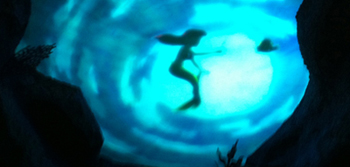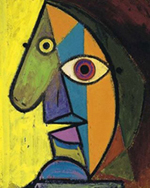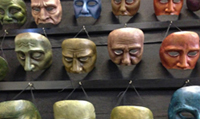“I’ve got thick skin and an elastic heart.” – Sia
The Winter Solstice on December 21 finds Venus going retrograde (backwards) in Capricorn, until February 1, 2014.
The planet Venus is named after the goddess of love and beauty. Noted mythologist Karl Kerényi says about Venus, as she emerged from the ocean, “From her very beginning she was awarded charge and office, amongst both gods and men, over the following: the whispering of maidens, laughter and hoaxes, sweet lust, love and loving kindness.” Likewise, in astrology Venus has her Joy in the 5th House of love, playfulness, creativity, sex and romance.
Capricorn is the serious, goal-oriented sign of responsibility, duty, obligation, and authority. Capricorn sits opposite the home-oriented sign of Cancer, and as such Capricorn takes us away from home, up and out into the world and into society. Symbolized by the goat climbing to the top of the mountain, one step at a time, Capricorn is resonant with the “upward mobility” of the structures of our society. Sometimes our professional and other obligations take us quite far from our home base.
When moving through Capricorn, Venus’ more playful, bubbly and frothy nature can get a bit serious, rigid and heavy-handed. It’s not necessarily an easy combination. In Capricorn, Venus can feel a bit like Atlas, carrying the world – the symbolism, perhaps, of the huge shoulder pads of the 1980s, when women began climbing to higher positions in the professional world and in modern society. Responsibility before fun, work before play. Venus’ true nature gets a little shut out when she’s over-burdened by the tight and busy schedules and responsibilities of modern society. Keep going, says Capricorn, and you’ll make it to the top.
GOING BACK TO THE SEA
When a planet moves retrograde, it slows down and stops completely before beginning its backward motion. Venus retrograde in Capricorn is a time to slow down, stop, and look back, something the goat is naturally designed to do atop the rocky mountains of its tough terrain.
Curiously, if we look back to the original symbol of Capricorn, we see that it’s not actually a goat climbing a mountain, but rather a mer-goat, a goat with the tail of a fish, a sea creature. And if we look back to Venus’ origins, she is the goddess who emerged from the sea. Venus and Capricorn have something in common after all, and it’s pretty extraordinary.
“Mer” means ocean, or sea. From “mer” we get words like merge (to dip in, immerse, dive under), merit (worthiness, value, excellence), and mermaid (maid of the sea). The mermaid is the mythic siren, luring mortals out to the sea, and has been an iconic image on tavern signs since the Renaissance. Strangely, the modern world seems to totally misunderstand this while staying true to it at the same time, by tagging Happy Hour to the tail-end of each work day.
The mer-goat comes from a time when Time was not a straight line moving forward, and life was not a frantic race to the top. Time was understood within the greater context of Eternity, and the past was understood as a foundation underneath us as much as something behind us. We see this latter notion in the image of Janus, the two-headed god of Time who looks both forward and backward simultaneously. From Janus we get January, the Capricorn time when “last year” and “next year” sit back to back. Ends and beginnings exist side-by-side. One year ends, a new year begins, and we can look at both at the same time. It’s a time of renewal.
Walt Disney had Venus in Capricorn (at 29 degrees, the tail-end of the sign, no less) and made his career by dipping into the imagination of fairy tales. His company released “The Little Mermaid” in 1989, when Venus, Saturn, Uranus, and Neptune were all conjunct in Capricorn. Interestingly, “The Little Mermaid is given credit for breathing life back into the art of Disney animated feature films after a string of critical or commercial failures produced by Disney that dated back to the early 1970s. It also marked the start of the era known as the Disney Renaissance.” It was the first time Disney had animated a fairy tale since “Sleeping Beauty” in 1959. Returning to its roots, Disney found renewal (the meaning of “renaissance”). The sea that washes things away is the same sea that brings things back.
Frank Sinatra also had Venus in Capricorn, and when his career was in serious decline he was cast in the movie “From Here to Eternity,” which began the climb of his career again to new heights. Though he is not pictured in its iconic image of two lovers passionately making love as waves wash ashore all around them, the image speaks for itself.
Venus brings things together, and Venus in Capricorn suggests that what you love and what you do best go together, and that there is great merit (and great beauty) in this connection. It’s what might be called a “calling.” When Venus is retrograde in Capricorn, it’s like Venus is being called back to the sea as a reminder of this connection. Rather than being caught up in the external rules, roles and responsibilities of society, there is always a deeper dream shimmering within each of us. The mer-goat keeps its tail in that ocean of dreams, and the path it climbs in life stays true to that dream. As bizarre as it might sound, during this Venus retrograde in Capricorn your greatest advocate might just be the voice of a little mermaid that beckons to be part of your world.












